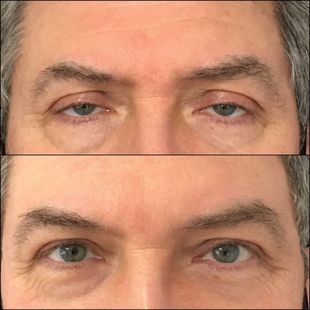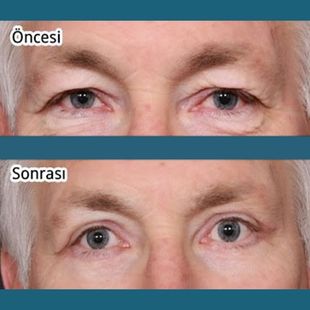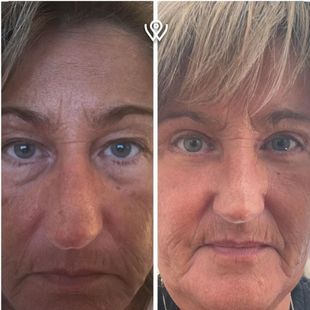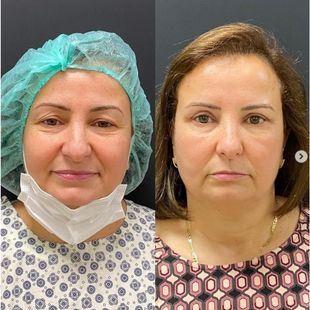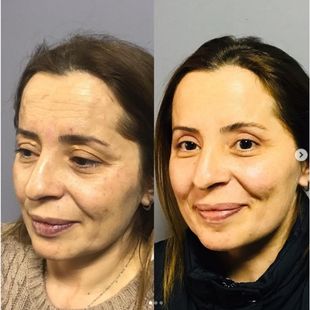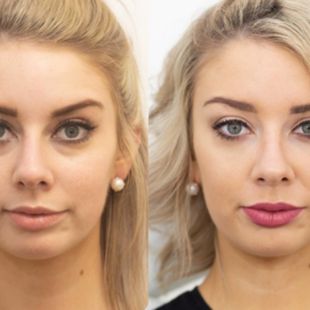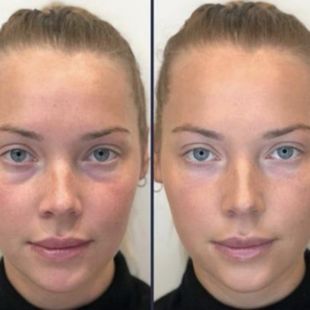Blepharoplasty: All That You Need to Know
What is Blepharoplasty?
Blepharoplasty is a surgical operation that one undergoes to improve the appearance of the eyelids. This procedure involves the removal of skin, muscle, and sometimes fat from the upper or lower eyelid or both in an effort to give the eyes an appealing look. It can be done to address functional problems-for example, partial obstruction of vision due to drooping eyelids-or cosmetic ones like puffiness of wrinkled lines on either side of the bridge.
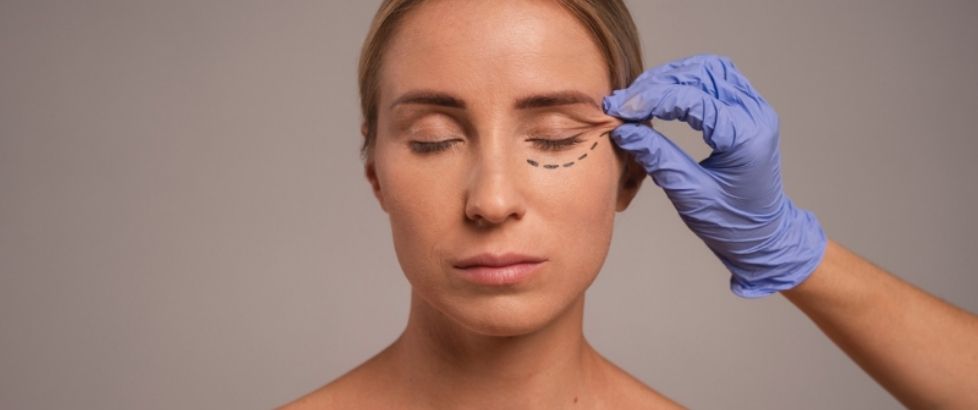
Types of Blepharoplasty
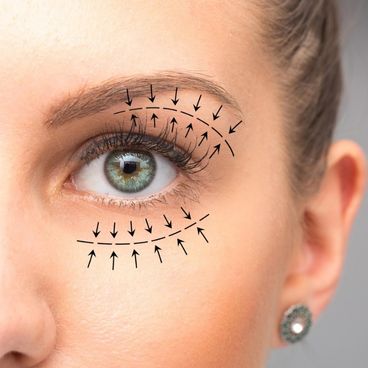
Blepharoplasty, generally known as eyelid surgery, can be divided into a few types based on which region of the eyelid is being treated and what particular aesthetic or functional goals are implied. These procedures rejuvenate the eyes, improve the vision by lifting sagging eyelids, and enhance facial harmony. Below are some of the major types of blepharoplasty:
1. Upper Blepharoplasty
It includes the removal of excess skin, muscle, and sometimes fat from the upper eyelids. This is usually done for aesthetic reasons or to improve vision that might have been compromised because of drooping skin.
The purpose is to rejuvenate sagging upper eyelids, which give a tired or aged appearance. Sometimes, the drooping skin obstructs vision, which may make it clinically necessary to do so.
1.800 £
Blepharoplasty
Candidates: Anyone with drooping, heavy feeling upper eyelids due to genetics or aging.
Advantages:
- Gives a more youthful, fresh appearance
- The line of vision may be improved by eliminating skin which obstructs the view
- Scarring is hardly noticeable because of the placement of the incision in the natural crease
2. Lower Blepharoplasty
Lower blepharoplasty refers to the surgical operation concerning the lower eyelids and is usually done in order to get rid of puffiness, bags, wrinkles, or sagging skin around the eyes.
It aims at removing excess skin and fat from the lower eyelids to reduce puffiness by smoothing the wrinkles and diminishing the appearance of under-eye bags.
Candidates: Those with prominent bags, darkened circles, or sagging skin beneath the eyes.
Benefits:
- Smooths puffiness and eye bags for a younger crisper view
- Sags the skin to smooth out fine lines in the eye area
- Smoothes the area underneath the eye, thereby enhancing overall facial harmony.
3. Double Eyelid Surgery (Asian Blepharoplasty)
Among the most popular cosmetic surgeries in East Asia is double eyelid surgery, also known as Asian blepharoplasty. This kind of surgery involves making a noticeable fold in the upper eyelid, hence creating a "double eyelid."
To make the eyes look more attractive with a well-defined fold in the upper eyelid, which makes the eyes larger and wider.
Candidates: Individuals with a single or low eyelid crease who are interested in improving the shape of their eyes.
Advantages
- More opened, larger-appearing eye shape
- Can be tailored to provide the most natural effect, which will result in a feature that easily blends into the patient's face. The results highlight the natural features and have minimal scarring.
4. Transconjunctival Blepharoplasty
Transconjunctival blepharoplasty is mainly applied in lower eyelid surgery. Unlike the traditional lower blepharoplasty, the incision for this mode of blepharoplasty is created inside the eyelid and, hence no resultant scarring.
To decrease puffiness or bags under the eyes through the removal or re-positioning of fat without the removal of excess skin.
Candidates: Those who have puffiness or a bag under the eyes but do not have too loose skin.
Advantages:
- There are no visible scars since the incision is made inside the eyelid.
- Recovery is shorter compared with traditional blepharoplasty.
- Preserves anatomic contoured appearance of the eye and avoids the excision of superfluous skin.
5. Revision Blepharoplasty
Revision blepharoplasty refers to corrective blepharoplasty after a previous unsuccessful blepharoplasty that failed to achieve the optimal result or caused some complication.
To correct problems from prior blepharoplasty, including asymmetry, incomplete correction, or excessive tissues removed that may cause difficulty closing the eye.
Candidates: Patients who have not achieved an acceptable outcome, or who have developed complications regarding, a previous eyelid surgery
Key Advantages:
- Improves both aesthetic and functional outcomes of the initial procedure
- Corrects specific issues, such as asymmetry or scarring
- Can enhance patient satisfaction by offering refined results
6. Non-surgical Blepharoplasty
Non-surgical blepharoplasty treatments are for the upper eyelid and the lower eyelids, enhancing the appearance of a patient without actual surgery being involved. These are less-invasive alternatives, which are temporary.
Purpose: Mild sagging, wrinkles, puffiness can be better without the incision or recovery time in the eye area.
Candidates: The candidate would be any patient with mild to moderate signs of aging of the eyes who wants a totally non-invasive approach.
Advantages:
- No cuts or downtime associated
- Can be a good option for younger patients or patients that have minor issues.
- Temporary results. It carries little risk of scarring.
Consultation and Preparation for Blepharoplasty
1. Initial Consultation
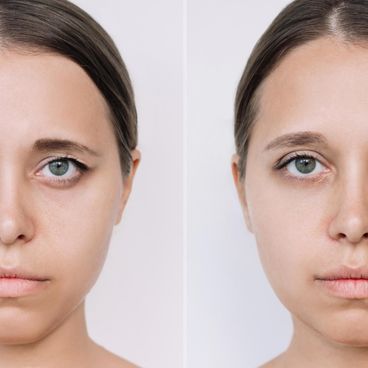
The initial consultation in blepharoplasty is the first and foremost step in this procedure. During this session, both the patient and the surgeon will speak about various factors: the wishes of the patient for his aesthetic look, his case history, and the blepharoplasty operation itself.
Main Points to be covered during Consultation:
Discussion of Goals: The surgeon will also ask what has brought the patient into surgery; to improve the look of sagging eyelids, reduce puffiness, or restore vision affected due to droopy eyelids. The patient should express their expectations.
Medical Conditions: The patient's pre-existing medical health condition, whether he has dry eye, glaucoma, diabetes, thyroid disorders, or vascular diseases, will be reviewed to see if they will pose a problem during and after surgery.
Eye Examination: The surgeon performs an examination of the eye to check the vision if there is any disorder that may interfere with the safety of the procedure. He may also check tear production to identify a dry eye problem.
Photographs and Assessment: The surgeon takes photographs of the eyes from various angles to plan for the surgery. It also documents the expected results.
Present Medications: A patient should discuss the medications, supplement or herbal remedies, as many substances can alter healing or affect the possibility of bleeding.
Realistic Expectations: The surgeon should establish realistic expectations of outcomes. Patients must understand that blepharoplasty can greatly rejuvenate them, but it does not stop the natural aging process.
2. Pre-Surgical Instructions

Once the go-ahead for surgery is decided, patients will be provided with a set of pre-surgical instructions. These recommendations minimize the risk of complications and ensure that the operation and post-operative course are uneventful.
Medication Adjustments:
There may be a need to temporarily stop drugs, mainly those which increase bleeding tendencies, such as aspirin, ibuprofen, warfarin, and herbal products like ginkgo biloba and fish oil.
The surgeon, depending on the patient's health status, will recommend antibiotics for preventing infection or blood thinners to minimize clotting risks.
Smoking and Alcohol
At least 2–4 weeks before surgery, smoking should be avoided because it reduces blood flow and, in this case, interferes with healing quickly and may promote complications.
Abstaining from alcohol must also be ensured one week prior to the surgery because the effect of alcohol may interfere with anesthesia and recovery.
Eye Care:
For patients who use contact lenses, eyeglasses rather than contact lenses may be required for a couple of days before undergoing surgery to allow irritation of the eye to be subsided.
Artificial tears or eye drops may be prescribed to prevent the eyes from getting dry in order to maintain optimal eye health before surgery. If general anesthesia or intravenous sedation will be used, the patient will most likely be required to abstain from food for at least 8 hours before the surgery.
3. Psychological Preparation

Blepharoplasty is usually an emotional experience since this is one of the most 'visible' parts of one's face. There is a need for patients to be informed regarding changes to be encountered psychologically or emotionally during this procedure.
Preparation: The patient should mentally prepare for the surgery and recovery. The post-surgery days may be demeaning due to swelling, bruising, and looking a bit 'different,' which could gradually get better with time.
Address Concerns: Any concern or apprehension can be openly discussed with the surgeon, firstly to get rid of fears, but secondly to be well informed about the surgical procedure and the recovery process.
4. Plan the Day of Surgery
There are things one can do before the actual surgery to ensure everything goes well on the day of operation.
Practical Preparation:
Arrange for Transportation: Patients are not allowed to drive immediately after surgery because of the anesthesia effect. Someone should be able to drive them to and from the surgical center.
Prepare a Comfortable Recovery Space: At home, the patient should be prepared for the recovery period by organizing a comfortable space with pillows, blankets, easy access to water, and medications.
Caregiver Support: It's nice to have someone around to assist the first 24-48 hours after surgery to help with tasks that may be more strenuous or require concentration.
5. Physical Pre-Surgical Preparation
The day of surgery, the following are the final steps to take in preparation for the best possible outcome:
Day of Surgery Instructions:
Clothing: The patient needs to wear loose and comfortable clothes which aren't hard to remove and wear back. They can wear button-up or zip-up tops as these don't have to go over the face, hence putting less pressure on the face while dressing.
Skin Care: The patient should come to the office with a clean face free of all makeup. Also, don't apply any lotions, moisturizers, or sunscreens.
Avoid Jewelry: Also, try to avoid wearing any kind of jewelry, contact lenses or any other accessories on the day of surgery.
6. Recovery Preparation
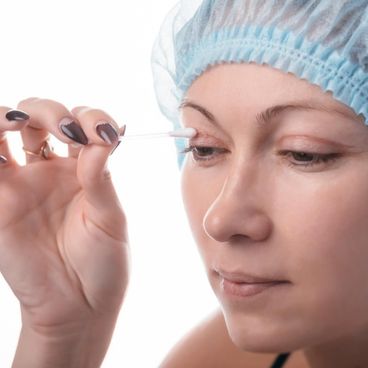
Having an idea of the recovery process in advance tends to help them by better preparation for after-surgery care.
Recovery Considerations:
Ice Packs and Eye Care: Provide supplies of cold compresses or ice packs to minimize swelling and bruising during the initial 48 hours.
Medications: Prepare medications prescribed, be it antibiotics or pain medicines, for availability upon immediate use after surgery.
Rest and Relaxation: You will be expected to rest for at least a week or two weeks following surgery. In this duration, most patients are forbidden from heavy lifting, strenuous activities, and exercise altogether.
Blepharoplasty Procedure
Blepharoplasty, or eyelid surgery, is performed to improve the appearance of sagging upper and lower eyelids that give an impression of puffiness and under-eye bags. Blepharoplasty typically requires 1 to 3 hours to complete, depending on whether both or only one of the upper and lower eyelids is being subjected to surgery or whether other areas of concern will be included in the procedure. It can be done under local anesthesia with sedation or under general anesthesia, depending on the extent of surgery to be carried out and preference of the patient. The step-by-step blepharoplasty:
An overview can be explained as follows:
1. Anesthesia
The whole procedure starts with the administration of anesthesia, in order to keep the patient comfortable and pain-free during the surgery. According to the patient's preference and the surgeon's suggestion, different types of anesthesia can be administered:
Local Anesthesia with Sedation: This will numb the area around the eyes; however, the patient will remain awake but in a state of relaxation due to the sedation.
General Anesthesia: This will make the patient completely unconscious during the operation, but it may be considered in selected cases where the extent of surgery requires this or the anxiety of the patient necessitates such a measure.
2. Marking the Incision Lines
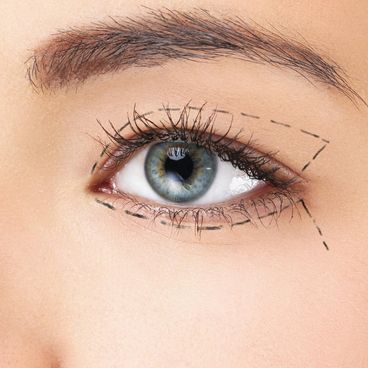
Before surgery, the surgeon will mark the areas of the eyelids where skin incisions will be made. The lines are carefully placed to minimize the amount that is noticeable by scarring. The upper eyelid incision is normally along the natural fold. Sometimes, depending on the plastic surgeon, the lower eyelid incision can just be below the lash line, while sometimes it is inside the lower eyelid in a transconjunctival approach.
3. Making the Incision and Removing Tissue
The surgeon will perform an incision in very precise locations depending on the type of blepharoplasty employed:
Surgery of the Upper Eyelid:
A small incision just in the upper eyelid is made along the natural crease.
From this well-hidden incision, the surgeon takes away excessive skin, fat, and at times even muscle.
The remaining tissue will then be tensed and pulled into place to give a much smoother look that appears more renewed.
Surgery of the Lower Eyelid:
In certain cases where fat has to be taken out or transposed, the incision may be made along the lash line or transconjunctival (inside the lower eyelid).
Extra skin and fat are taken out, and fat might sometimes be redistributed to allow puffiness and under-eye bags to be less obvious. Skin tightening is also performed if required.
Sagginess and lines are reduced with the extra skin tightening.
4. Fat Repositioning and Fat Preservation
Modern blepharoplasty emphasizes fat repositioning or its preservation, rather than mere removal. This prevents a sunken or hollow appearance of the eyes and instead provides a youthful contour.
Fat Redraping: The fat is not removed but redistributed to fill up the hollows, especially into the lower eyelids. A better balance in appearance now ensues- a more natural result.
Fat Preservation: The surgeons may not excise the fat but instead preserve it when patients have a minimal quantity of puffiness yet exhibit signs of loss of volume.
5. Closure of Incisions
After the excising or repositioning of tissue, the surgeon carefully closes the incisions:
Upper Eyelids: The incision is stitched with fine sutures that might or might not be dissolvable. If the sutures are not dissolvable, they can be removed within 5-7 days. The sutures are camouflaged along the natural fold of the upper eyelid; hence, the scars are barely visible.
Lower Eyelids: If the incision is made along the lash line, sutures are used and placed very carefully so that scarring is minimized. In cases of transconjunctival blepharoplasty, no external incision is made and hence there is no visible scarring.
6. Final Touches
At the end of the surgery, it is time for the surgeon to go over the results very carefully to make sure there is symmetry and a balance between the two eyes. This is where all the final touches are put to make it look natural and harmonious.
Conclusion
Proper consultation and preparation are essential to successful blepharoplasty outcomes. The open discussion of expectations and medical background, preoperative instructions, and the preparation for post-surgery recovery are important. This will make the surgical course easier and less complicated and allow for the best outcome possible.
Recovery Time
-
Initial DaysSwelling and bruising may occur the first days after surgery. Cold compresses are often used to reduce these symptoms. Sometimes vision is blurry due to swelling or ointments put in the eye during surgery.
-
First WeekStitches are commonly removed and most bruising and swelling are gone. Many patients feel well enough to return to work or to social activities.
-
3-4 WeeksMost of the swelling has disappeared, and the final result becomes visible. Complete healing might take months; good sun protection and judicious wound care are necessary during that time to achieve the best possible scar.
-
The Final OutcomeBlepharoplasty attempts to make the eyes appear younger, more open, and fresher. Results obtained from blepharoplasty are long-lasting; however, they do not impede the progress of natural aging. The majority of the patients attain a dramatic improvement in both aesthetic and functional conditions of the eyelids; the final result may take some weeks or even months due to the fact that the swelling disappears and scars gradually become less visible.
Frequently Asked Questions
Price
Average costs around the world
-
Turkiye
1,400.00 € -
Spain
4,500.00 € -
Mexico
2,500.00 € -
Thailand
2,000.00 € -
United States
4,000.00 € -
Australia
5,000.00 €
How long does this surgery take?
Will there be any visible scars after the surgery?
Will blepharoplasty improve my vision?
Is the procedure painful?
Can blepharoplasty be combined with other procedures?
Will I need to give up contact lenses?
Is makeup allowed post-surgery?
How long does it take to see the results?
Can blepharoplasty be performed for any skin type?
Can men have blepharoplasty?
-
Get Quality Treatments You can get an idea of the quality of the clinics & hospitals by reading verified customer reviews of their previous experience to make your decision with confidence
-
Gain Time Don't waste time checking recommendations from friends and other websites. Collect offers for your needs online and save time that you could spend with your loved ones.
-
Best-Matched Offers Get personalized offers by answering a few specific questions about your treatment needs. Quickly receive the best-matched offers from over 100 clinics and hospitals
-
Be Protected At every step of your journey, Wellcome preserves your experience. We'll have your back so you can get on with your work in peace.

